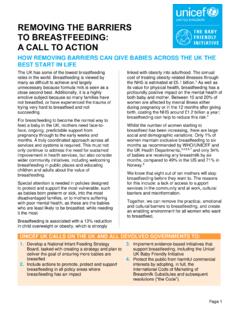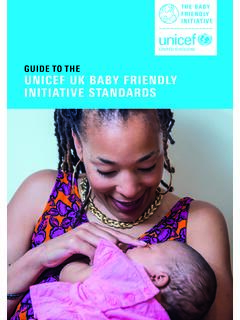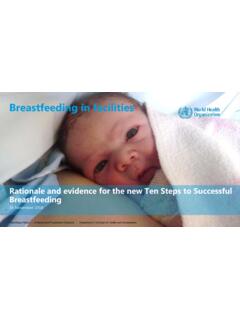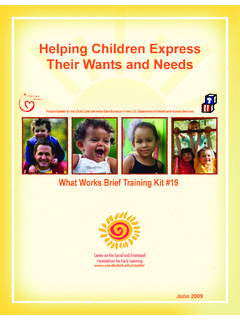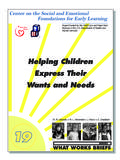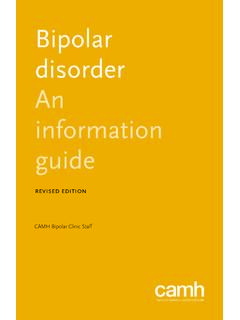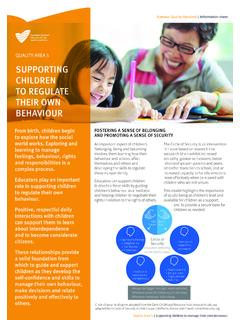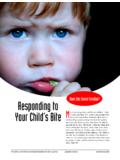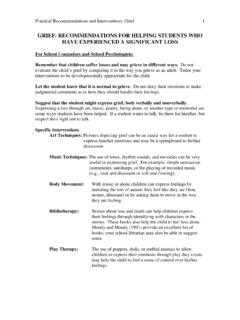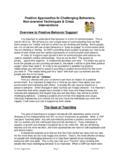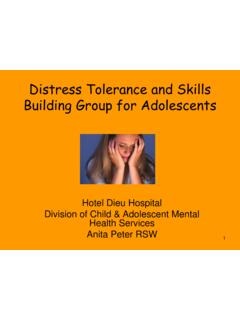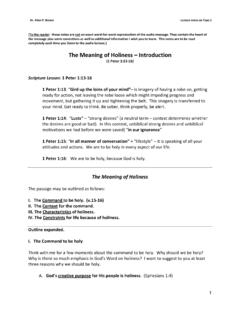Transcription of Having meaningful conversations with mothers - UNICEF UK
1 Having meaningful conversations with MOTHERSA GUIDE TO USING THE BABY FRIENDLY SIGNATURE SHEETSHAVING meaningful conversations with MOTHERS2 WELCOME Welcome to this short guide to using the Baby Friendly Initiative signature sheets. The signature sheets are designed to help you deliver Baby Friendly care to mothers and babies in the antenatal and postnatal period and beyond. They are intended to be part of the mothers records so that they can be referred to and completed by staff during routine care. Examples of the signature sheets can be found on pages 12 14 of this booklet.
2 They cover conversations during pregnancy and in early and later postnatal periods. Full size, printable versions can be found at Further reading Building a happy baby: A guide for parents: Guide to the UNICEF UK Baby Friendly Initiative standards: The evidence and rationale for the UNICEF UK Baby Friendly Initiative standards: 3 Having meaningful conversations with MOTHERSCOMMUNICATION AN OVERVIEWC ommunication is at the heart of effective care and good communication skills are essential for maintaining relationships built on trust.
3 You might feel that as a health professional you have little to learn about communication, but in reality you might have had little opportunity for much recent formal education on communication and, even if you have, there is little harm in reminding ourselves and reinforcing what good practice is. It is worth noting that most complaints within the healthcare system arise from poor or insensitive communication and therefore working on ways to improve the way you communicate with mothers and their families will have a positive impact across all your care.
4 Guiding not directingCommunication is a process used to help us interact and share information, feelings, ideas and concerns with other people. Good communication should be a two way process: an exchange rather than a monopoly of a conversation. Rollnick et al (2008) describe three main communication styles to show different approaches used within health care and counselling services: Directing when the conversation is led or monopolised by the person telling or prescribing information. There is very little exchange going on.
5 This best describes a tick box approach often used by health professionals as a means of getting information across when pushed for time. Following when the conversation is led by the person receiving information. This approach is often used in counselling and is particularly valuable when supporting women who have experienced trauma or loss. Guiding when the conversation is shared between the two parties. This approach involves exploring feelings through active listening and then providing information and alternatives to support informed decision-making.
6 It enables relevant information to be shared and has been used effectively to support behaviour change. Having meaningful conversations with MOTHERS4 Shifting the emphasis from a directional approach to a guiding approach is key to implementing the new Baby Friendly standards. Effective communication also involves elements of verbal skills (words, tone of voice, clarity of language) and non-verbal skills (facial expressions, gestures, body language). Although greater emphasis is often placed on the words that we use when communicating, it is often the non-verbal elements that people pick up on and with new mothersEvidence suggests that pregnant women and new mothers have greater right brain dominance (intuitive, subjective) than left brain (analytical, objective), which increases their sensitivity to non-verbal communication approaches.
7 They may also be less receptive to large volumes of verbal information. Developing strategies to move from a more directional approach to information sharing with a more person-centred approach will help you to practice in ways that are really useful to the mothers in your care. Rollnick, S, Miller, WR, & Butler, CC, Motivational interviewing in health care: Helping patients change behaviour, The Guildford Press, New York, 2008. UNICEF UK/Jennings5 Having meaningful conversations with MOTHERSCONVERSATIONS IN PREGNANCY We want all pregnant women to have the opportunity for a discussion about feeding their baby and how to recognise and respond to their baby s needs.
8 We also want to encourage them to develop a positive relationship with their growing baby in utero. This discussion can take place as part of routine antenatal care or as part of a class. 1. Agree an agenda The conversation should be a two-way partnership to ensure it remains mother-centred. Find out what she wants to talk about and address her needs first. She will then be more open to what you have to Ask open questions This will help you to explore feelings and emotions and will provide a clearer outline of her story and previous experience.
9 Use phrases like tell me about and how do you feel about to help to encourage her to Listen actively Making eye contact, smiling and nodding all help to show you are listening and will encourage more discussion. 4. Reflect back This shows you have heard what was said and helps clarify any misunderstandings. You can say things like you feel that breastfeeding isn t for you or you are anxious .5. Find out and build on information she knows Don t overload with facts and figures. Try to tailor the information to individual needs and expand on what she already knows.
10 It is neither useful nor effective to list all the health benefits of breastfeeding if she has had a previous bad experience, as this will make her feel a Show empathy Remember the importance of walking in the other person s shoes. If she reports a previous bad experience or she says the thought of breastfeeding makes her feel sick, don t dismiss these feelings as they matter to Remain neutral Avoid being judgmental, even if you don t agree with what is being said. 8. Don t collude Sometimes in an effort to be kind, it may be tempting to say things like it doesn t matter if you breastfeed or not your baby will do just as well.


